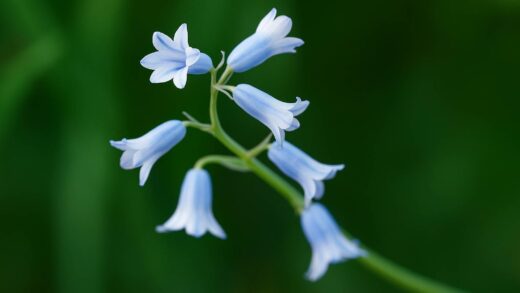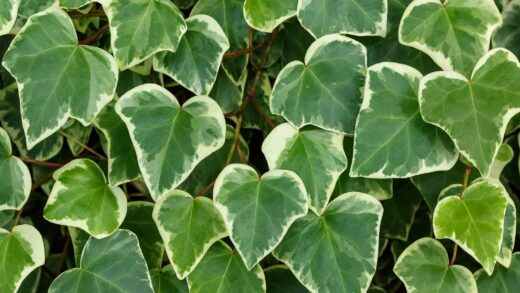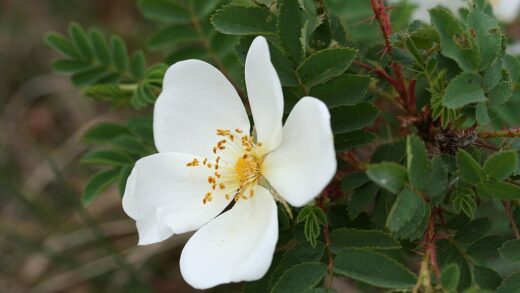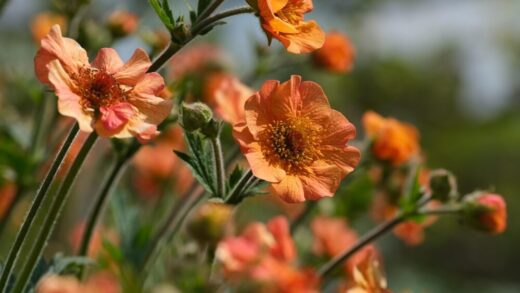Understanding the specific water needs of the bluebeard shrub is fundamental to cultivating a healthy, thriving plant that rewards you with a profusion of its signature blue flowers. Caryopteris is widely celebrated for its impressive drought tolerance once it becomes established, making it a superb candidate for low-water gardens and regions prone to dry summer conditions. However, this reputation can sometimes be misleading for the novice gardener, as the plant’s water requirements change significantly throughout its life cycle. During its initial establishment phase, it requires consistent moisture to develop the deep and extensive root system that will sustain it in the future. The key to successful irrigation for this shrub lies in striking the right balance: providing enough water to support healthy growth without creating the waterlogged conditions it absolutely detests.
The period immediately following planting is the most critical time for providing consistent water to your Caryopteris. For the first full growing season, the young shrub is entirely dependent on you to supply the moisture it needs to establish a strong foundation. A deep and thorough watering immediately after planting is the first essential step, as this helps to settle the soil around the delicate roots and eliminate any air pockets. Following this initial soaking, you should aim to keep the soil consistently moist, but never soggy. Checking the soil with your finger every few days is the most reliable method; if the top couple of inches feel dry to the touch, it is time to water again.
The goal during this establishment period is to encourage the roots to grow downwards in search of moisture, rather than staying shallow. To achieve this, it is far more effective to water deeply and less frequently than it is to provide shallow, daily sprinklings. A deep watering moistens the entire root zone and allows the soil to dry out partially between sessions, which promotes healthy root development and improves soil aeration. Using a soaker hose or drip irrigation system can be particularly beneficial, as it delivers water directly to the root zone slowly and efficiently, minimizing water loss through evaporation and preventing the foliage from getting wet, which can reduce the risk of fungal diseases.
The frequency of watering during the first year will depend on several factors, including your soil type, climate, and recent weather patterns. In sandy soils that drain quickly, you will likely need to water more often than in heavier clay soils that retain moisture for longer. Similarly, during periods of hot, windy, or dry weather, the plant’s water needs will increase significantly. It is crucial to be observant and adjust your watering schedule based on the plant’s appearance and the prevailing conditions. A wilting plant is a clear sign of water stress, although it is important to check the soil moisture first, as wilting can paradoxically also be a symptom of overwatering and root rot.
As the Caryopteris moves into its second year and beyond, and its root system becomes well-established, its water requirements will decrease dramatically. A mature bluebeard is exceptionally resilient to drought and may require very little supplemental irrigation in many climates. Once established, it can often thrive on natural rainfall alone, except during prolonged and severe periods of drought. This transition from a regularly watered new plant to a self-sufficient mature shrub is a gradual process. You can slowly reduce the frequency of your supplemental watering during the second season, always monitoring the plant’s response to ensure it remains healthy and vigorous.
More articles on this topic
Recognizing signs of water stress
Being able to identify the signs of both under- and overwatering is a crucial skill for any gardener, and it is particularly important for a plant like Caryopteris that is sensitive to extremes. The most obvious sign of underwatering, or drought stress, is wilting. The leaves will lose their turgidity, droop, and may begin to feel dry or crispy to the touch. You might also notice the leaves turning yellow or brown, starting from the edges and progressing inwards. In severe cases, the plant may start to drop its leaves prematurely to conserve moisture, and flower production will be significantly reduced or may fail to occur altogether.
When you observe these symptoms, your first instinct might be to immediately douse the plant with water, but it is important to confirm the diagnosis first. Always check the soil moisture level before watering. If the soil is dry several inches down, then underwatering is indeed the culprit, and a deep, slow soaking is required to rehydrate the root zone thoroughly. It can be beneficial to water early in the morning, which allows the plant to absorb the moisture throughout the day and minimizes evaporation. For severely drought-stressed plants, it may take several watering cycles over a few days for them to fully recover.
Paradoxically, some of the symptoms of overwatering can mimic those of underwatering, which can be confusing. An overwatered Caryopteris may also exhibit wilting and yellowing leaves. However, the wilting in this case is caused by the roots being deprived of oxygen in the saturated soil, which leads to them rotting and becoming unable to absorb water and nutrients. The yellowing leaves, a condition known as chlorosis, will often feel soft and limp rather than dry and crispy. You may also notice a general lack of new growth, stunted development, or even a foul smell coming from the soil as the roots decay.
If you suspect overwatering, the immediate course of action is to stop all supplemental irrigation and allow the soil to dry out completely. Improving drainage is the long-term solution. If the plant is in a container, ensure the pot has adequate drainage holes and is not sitting in a saucer of water. For plants in the ground, you may need to amend the surrounding soil with organic matter or grit to improve its structure. In severe cases of root rot, you may need to carefully dig up the plant, trim away the blackened, mushy, and rotten roots, and replant it in a better-draining location or a raised bed.
More articles on this topic
The impact of soil and mulch
The type of soil in your garden plays a pivotal role in determining your watering strategy for Caryopteris. Different soil textures have vastly different water-holding capacities and drainage rates, which directly impact how often you will need to irrigate. Sandy soils, for example, are composed of large particles with large pore spaces between them. This structure allows water to drain through very quickly, meaning these soils dry out rapidly and will require more frequent watering to keep the plant hydrated, especially during the establishment phase.
In contrast, heavy clay soils consist of very fine particles that are tightly packed together. These soils can hold a significant amount of water, but they often suffer from poor drainage and can become waterlogged easily. For a Caryopteris planted in clay soil, the risk of overwatering and root rot is much higher. It is essential to water less frequently and to ensure the soil has been properly amended at planting time to improve its structure and drainage. Allowing the soil surface to dry out thoroughly between waterings is crucial in these conditions. Loam soil, which is a balanced mixture of sand, silt, and clay, is ideal as it retains moisture well while still allowing for good drainage.
The application of a layer of organic mulch around the base of your bluebeard is one of the most effective ways to manage soil moisture and reduce your watering workload. A two- to three-inch layer of mulch, such as shredded bark, wood chips, or compost, acts as a protective blanket over the soil surface. This layer helps to significantly reduce water loss from evaporation by shielding the soil from the sun and wind. This means the soil stays moist for longer, and you can extend the time between watering sessions.
In addition to conserving moisture, mulch provides several other benefits that contribute to the overall health of the plant. It helps to suppress the growth of weeds, which would otherwise compete with the shrub for water and nutrients. As the organic mulch gradually breaks down, it also adds valuable nutrients and organic matter to the soil, improving its fertility and structure over time. When applying mulch, be sure to keep it a few inches away from the main stem or crown of the plant to prevent moisture buildup against the bark, which could lead to rot.
Watering container-grown bluebeard
Cultivating Caryopteris in containers is an excellent option for those with limited garden space, patios, or balconies. However, it is important to recognize that the watering needs of a container-grown plant are distinctly different from one planted in the ground. The soil in pots and containers has a much smaller volume and is exposed to the air on all sides, causing it to dry out far more quickly than garden soil. This means that potted bluebeards will require much more frequent watering, especially during the hot summer months, when they may need to be checked daily.
The key to successfully watering a potted Caryopteris is to water thoroughly whenever the top inch or two of the potting mix feels dry. When you do water, continue to add water until you see it flowing freely from the drainage holes at the bottom of the container. This ensures that the entire root ball has been moistened and also helps to flush out any accumulated salts from the potting mix. After a thorough watering, allow the pot to drain completely and never leave it sitting in a saucer full of water, as this will lead to saturated soil and the dreaded root rot.
The type of container you choose can also influence your watering schedule. Porous containers, such as those made from terracotta or unglazed ceramic, allow moisture to evaporate through their sides, which means the soil will dry out more quickly. Non-porous containers, like plastic or glazed ceramic, will retain moisture for longer. You will need to adjust your watering frequency based on the pot material, as well as its size; smaller pots will dry out faster than larger ones. Regardless of the material, it is absolutely essential that the container has adequate drainage holes at the bottom.
Just like their garden-dwelling counterparts, container-grown Caryopteris plants become more drought-tolerant as they mature. However, they will never be as self-sufficient as plants grown in the ground and will always rely on you for their water supply. During the winter, their water needs will decrease significantly as the plant enters dormancy. Water only sparingly during this period, just enough to prevent the soil from drying out completely. Overwintering in a location sheltered from excessive winter rain can also help to prevent the soil from becoming waterlogged during the colder months.
Seasonal watering adjustments
Adapting your irrigation practices to the changing seasons is essential for maintaining the health of your Caryopteris. The plant’s water requirements are highest during the late spring and summer, which is its period of active growth and preparation for flowering. This is also the time of year with the highest temperatures and longest days, leading to increased rates of transpiration and evaporation. During this peak season, you will need to be most vigilant about monitoring soil moisture and providing supplemental water, especially for young plants or during periods with little rainfall.
As summer transitions into autumn, the plant’s growth rate begins to slow down, and its water needs naturally decrease. The cooler temperatures and shorter days mean that less moisture is lost from both the plant and the soil. You should gradually reduce the frequency of your watering as the weather cools. This allows the plant to begin its natural process of hardening off and preparing for winter dormancy. Continuing to water heavily late into the season can promote tender new growth that is susceptible to frost damage and can also increase the risk of root rot in the cool, damp soil.
During the winter months, a dormant Caryopteris requires very little water. For plants in the ground, natural precipitation is usually more than sufficient to keep the roots hydrated. You should not need to provide any supplemental water during this time unless you live in a climate with very dry winters. In fact, the greatest threat to the plant during winter is often excessively wet soil rather than drought. This is why good drainage is so critical for its survival in regions with cold, wet winters.
When spring arrives, and the soil begins to warm up, the plant will break dormancy and start to produce new growth. As this new growth emerges, the plant’s demand for water will start to increase once again. This is the time to resume your monitoring of soil moisture and begin watering as needed. A deep watering in the early spring can help to rehydrate the soil and provide the plant with the moisture it needs to fuel its initial burst of growth. From this point, you will fall back into the rhythm of adjusting your watering based on the plant’s needs throughout the active growing season.


















